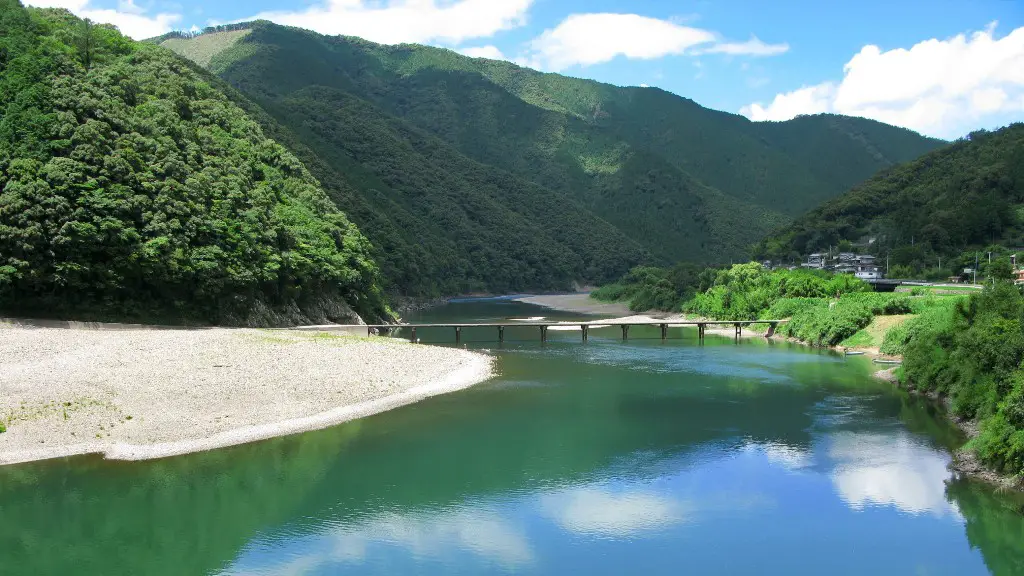The Ganges River is a trans-boundary river of Asia which flows through the nations of India and Bangladesh. The 2,525 km (1,569 mi) river is the largest in India and one of the most sacred rivers in Hinduism. It is also a lifeline to millions of Indians who live along its course and depend on it for their daily needs. It is worshipped as the goddess Ganga in Hinduism.
The Ganges River is important to Hindus because it is considered sacred. Hindus believe that the river is a goddess herself, and that she has the power to cleanse away sin. Many Hindus bathe in the river as a form of purification. The Ganges is also important to the Indian economy. The river provides irrigation for crops, and it also is a major source of hydroelectric power.
Why Ganga water is so special?
The Ganga is one of India’s holiest rivers and is known for its self-cleansing properties. The waters of the Ganga are said to be able to stay clean even when stored for years. This is because the river is constantly flowing and the water is constantly being refreshed.
The River Ganges is important to Hindus as it is seen as a sacred river that can wash away their sins. The city of Varanasi is located on the banks of the river and is a popular place for Hindus to bathe in.
Can we drink Ganga water
The water quality of river Ganga is not up to the mark and it is not fit for drinking purpose. However, it can be used for bathing purpose. The State Pollution Control Board has submitted a water quality analysis report in this regard.
The water in river Ganga is said to have special properties that can cleanse people of their sins. However, a new study has found that bathing in the river can actually expose people to high levels of faecal coliform.
The study, conducted by the Indian Institute of Technology (IIT) Roorkee, found that the level of faecal coliform in the river water was up to 3,000 times higher than the acceptable limit.
The study also found that the level of dissolved oxygen in the river water was very low, which could lead to the growth of bacteria.
The researchers say that the high levels of faecal coliform in the river water could lead to gastrointestinal infections in people who bathe in the river.
They have urged the government to take measures to improve the water quality in the river.
Why Ganga is on Shiva’s head?
Ganga is considered to be a very holy river in Hinduism. It is said to be the causal waters from which the earth arises. It is also considered to be the essential instrument of ritual purification. By holding the Ganga on his head, Shiva allowed an outlet to the great holy river to cross the earth and bring purifying water to humans.
The Ganges is one of the most sacred rivers in Hinduism, and is also the fifth-most polluted river in the world. Every day, millions of Hindus bathe in the river as part of their religious rituals. Unfortunately, the river is also used as a dumping ground for sewage and industrial waste, which has led to its pollution.
There are several initiatives underway to try to clean up the Ganges, but it will be a long and difficult process. In the meantime, we can all help to reduce pollution in the river by not disposing of our waste in it.
Why Ganga water is green?
Environmental pollution is a big problem in many parts of the world, and it seems that it is only getting worse. Dr. Kripa Ram is a scientist who studies environmental pollution, and he has said that the algae in the Ganga river are due to increased nutrients in the water. He also cites rain as one of the reasons for the change of color of Ganga water. This is a big problem for many people who rely on the Ganga river for their livelihood, and it is important to find a way to solve this problem.
There is a belief among some people that locals have built up an immunity to the river’s bacteria, even if their mission is to clean it up. However, according to Sue Lennox, chief executive of OzGreen, this idea is a myth. People who bathe in the river can still get ill from the bacteria that is present.
Why doesn’t the water of Ganga get dirty
The scientific reason for the cleanliness of the water in the Ganges River is that it naturally contains bacteriophages. These are viruses that attack and kill bacteria, preventing them from growing. This helps to keep the water clean and free of disease-causing microbes.
It is heartening to see that the Ganges river is being cleaned intensively, which has resulted in improving the water quality to never-before standards. This is a huge success story and it is hoped that this trend continues so that the river is pollution-free and becomes a source of clean water for all.
Why was Parvati angry with Ganga?
This is a story from Hindu mythology about the god Shiva and his consort Parvati. Parvati becomes jealous of Shiva because he spends so much time grooming his hair. She begs him to get rid of the water that is trapped in his hair, and he agrees.
The Shiva-Ganga relationship is both perpetual and intimate. Shiva is sometimes called Uma-Ganga-Patiswara (“Husband and Lord of Uma (Parvati) and Ganga”), and Ganga often arouses the jealousy of Shiva’s better-known consort Parvati.
Who took Ganga from heaven to earth
Bhagiratha was a legendary king of the Ikshvaku dynasty in Hindu literature. He is best known for his legend of bringing the sacred river Ganges, personified as the Hindu river goddess Ganga, from heaven upon the earth, by performing a penance.
The story of Bhagiratha is told in the epic Mahabharata. According to the story, Bhagiratha was the son of Dilipa, a king of the Ikshvaku dynasty. After the great sage Narada advised Bhagiratha to perform a penance to please the goddess Ganga and bring her down from heaven, Bhagiratha did so for many years.
Finally, Ganga agreed to come down to earth, but she said that her descent would cause great damage to the world. To prevent this, Bhagiratha prayed to Lord Shiva, who agreed to catch the river in his hair.
When Ganga finally flowed down onto the earth, she went on to purify the souls of Bhagiratha’s ancestors, who had been cursed and sent to hell.
The river stinks because of Sewage and effluents from the 300-plus tanneries goes untreated into the Ganges. This causes children to get sick from playing in the water. The chromium from the tanneries is especially toxic and can cause serious health problems.
Do people drink from the Ganges River?
The Ganges river is one of the most sacred and important rivers in India. It is also one of the most polluted rivers in the country. The river and its tributaries are a vital water source for hundreds of millions of people, who rely on it to drink, bathe and irrigate land. However, the river is also used as a dumping ground for industrial and human waste, and is significantly polluted. This pollution has a major impact on the people who rely on the river for their livelihoods, and on the environment.
This is good news for the many people who rely on rivers for their water supply. Even though the glaciers will eventually disappear, the rivers will still have a good flow of water.
Why did Ganga come down to earth
The River Ganga is one of the holiest rivers in Hinduism and is also considered to be a goddess. The river has its origins in the heavens, and was brought to Earth by Bhagiratha. He did this in order to bestow nirvana upon his ancestors who were cursed by Sage Kapila. After years of penance, River Ganga was finally able to descend to Earth, and Lord Shiva agreed to channelize her flow. The River Ganga is now known for its purifying properties, and is a popular destination for pilgrims.
The final answer to the question is that the bacteria found in the Ganga water is Coliform bacteria.
Warp Up
The Ganges River is significant to Hindus because it is considered to be holy. The river is also a lifeline to millions of Indians who live along its banks and depend on it for their daily needs. The Ganges is important for both religious and economic reasons, and it plays a central role in the lives of Hindus.
The Ganges River is essential to the lives of those who live along its banks. It provides them with a source of water for drinking, washing, and irrigation. The river is also a source of livelihood for many, as it is home to a large number of fish. In addition, the Ganges River is considered a sacred body of water in Hinduism, and its waters are believed to have cleansing properties.





